Midweek Review
Whither the humanities and social sciences in the universities in Sri Lanka? – A short essay
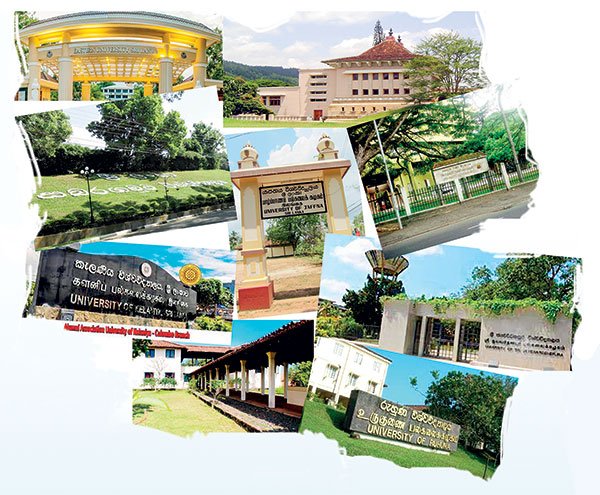
By Prof. Susirith Mendis
Former Vice-Chancellor
University of Ruhuna.
(susmend2610@gmail.com)
I read with much interest, the article by Prof. Farzana Haniffa, Professor and Head, Department of Sociology, University of Colombo, titled ‘Undervaluing Social Science and Humanities teaching in the Sri Lankan University System’ which appeared in ‘The Island’ of 1st February 2022. I understand the predicament she talks about. In that article, Prof. Haniffa alleges that “there is very little recognition or acceptance of the kind of knowledge the H and SS can bring to the table at the level of the UGC mediated Quality Assurance process.” The good professor goes on to describe the diminished role and acceptance of the H and SS in the quality assurance process within our university community. Whereas I agree that there is a need to take immediate cognizance of the need of a large role for H and SS in those processes, I feel that this disregard has deeper and fundamental dimensions.
Hence, I thought it pertinent to submit this article which I wrote for a Prof. Vinnie Vitharana Felicitation volume that was published by the Department of Sinhala, University of Ruhuna. I am submittiing an appropriately re-written version to ‘The Island’ in response.
What I write here is likely to be controversial and may provoke those in the Arts, Humanities and Social Sciences faculties to disagree with some of the thoughts and, perhaps, some suggestions that I make herein.
When one writes on the humanities in the universities, it is imperative that we use some comparative measure. To my mind, without doubt, the ‘Gold Standard’ in this regard is the University of Peradeniya Faculty of Arts (then, the University of Ceylon). Among the great academics who walked tall down the corridors of Peradeniya was the intellectual colossus of that time, Professor Ediriweera Sarachchandra, who gave real meaning to the Sinhala cultural revival of 1956.
Their students kept their ‘flame inviolate’. Professors, Leslie Gunawardene, KM de Silva, KNO Dharmadasa, Ashley Halpe, Merlin Peiris, K. Sivathamby and Ralph Peiris are some names that readily come to mind. They epitomised and represented the highest traditions of academics of post-independent Sri Lanka. Learned and cultured, many had excellent bilingual skills and were exacting in the quality and standards they expected of university academics.
Let me pose some questions. They will remain unanswered in this essay simply because the answers must necessarily lie in extensive and in-depth socio-anthropological research. I am a medical academic with not the slightest pretense to such capability.
Can we truthfully say that the situation improved thereafter? Were the academic qualities and standards maintained thereafter? Were the next generation of academics and scholars able to fit into their shoes once they departed the scene? There are a few exceptions, I agree. But we know that exceptions make the rule. And the rule is that the new generation has not made themselves accomplished as creative intellectuals in the genre and quality of their predecessors. Is there a formula to turnout ‘creative intellectuals’? If so, have we lost the formula?
Was the socio-political upheaval of 1956 itself to blame for this? Did we produce an inward-looking, insular, narrowly nationalistic intellectual class? Especially in the humanities? Or is the present unsatisfactory situation arising out of other causations?
Would some academics argue that the ‘nativisation’ of the intellectual and the academic, post’56, is in itself a positive outcome; that the pre-’56 intellectuals were the remnants of the British ruling class – the “Pukka Sahibs”; whereas the ‘children of 56’ are the true inheritors of the earth, born of earth, sons (and daughters) of the soil, nurtured by the cultural founts and milieu of indigenous Sri Lankan traditions?
One is reminded of the famous statement of the Black-Algerian political theorist, psychoanalyst and revolutionary-philosopher, Frantz Fanon (1925-1961) in his celebrated book “The Wretched of the Earth”. Referring to the elites of post-World War II, post-independent, post-colonial nations, he wrote that they use “glutinous words that stick to their teeth”. The sub-title of the book is more descriptive and intended – “A Negro Psychoanalyst’s Study of the Problems of Racism and Colonialism in the World Today”. Fanon argued that language has a role in moulding the attitudes of “natives”, particularly those victimised by colonisation. He believed that the language that the colonials taught us made us really incoherent when describing our socio-cultural and political predicaments. Almost saying that we spoke in a language, the real meaning of which we ourselves did not clearly understand. Or we were merely mouthing words of our colonial masters. So were our last generation of pre-independent, pre-’56 intellectuals, elites as Fanon describes them? Or are we now living in an era where the thoughts and words of Fanon and like-minded intellectuals have become irrelevant?
It might be opportune at this point in my essay to cite two Sri Lankans (intellectuals in their own right) that may give some insight to the current dilemma and predicament of the Humanities and Social Sciences. These are anecdotal, but since they were said in my presence, though not directly to me, I vouch for their veracity.
The first is during the time I spent (1980-83) as Lecturer in Physiology at the Faculty of Medicine, Peradeniya. I was more at the Medical Education Unit (MEU) there, than the Department of Physiology, as it was a WHO Regional Training Centre in Medical Education and had many medical academics from South Asian countries visiting regularly. One regular visitor to the MEU was Prof. Thiru Kandiah (then Senior lecturer). Talking about the lack of originality of thought and hence academic creativity, Prof. Thiru Kandiah said (a quote from memory) “… Until our intellectuals begin thinking in their own native language (Sinhala and Tamil), we will not generate original thoughts that are essential for genuinely creative knowledge.” When I reminded him of this statement when I met him after a lapse of nearly 30 years, he could not quite remember that he said it. Neither did he say that he agrees with that thought. Perhaps, he had changed his mind about such a concept in the intervening years. I did not ask him whether he had. But taking it in the context of what Fanon wrote in 1961, this is a concept that needs to be debated by academic psychologists, linguists, anthropologists and other social scientists. But, if this theory is correct, since we now have academics who are mostly monolingual in academic accomplishments and training, and therefore they are likely to be ‘thinking’ in their own language, there has to be a gush of academic writings and publications that are truly creative. Is there?
The second is a chance conversation that I was party to during a tea break at a conference in Colombo. Prof. Chris Weeramantry was the keynote speaker. Again, on the subject of intellectual creativity, he observed that in the Sciences, which are based on the Western, Judeo-Christian, and Graeco-Roman traditions that we know today as the Western Philosophical Tradition, we will hardly, if ever, be creative. We will continue to mimic the West most often and if ever we become creative in the sciences, at best, they will be extremely marginal. He further said that we have real contributions to make to the world of knowledge in the humanities and law. Humanities, because our indigenous cultures and value systems are based on the Eastern Philosophical Tradition and in Law we have a very long legal tradition based on Buddhist Ethics. Do you agree?
Therefore, we should have had a great flowering of creative intellectual activity emanating from the humanities and social sciences and the law. Unfortunately, with a few exceptions, we have not seen such creativity. Large numbers of academics in the humanities and social sciences, due to their limited language competencies have a limited world view. Generation of new knowledge requires an open and expansive mind set that can be acquired only through widening one’s experience directly or through extensive reading – particularly, readings from other experiences and cultures. I have observed that there is a resurgence in the translations of classics from English, Russian, German and French literature into Sinhala.
There are, but less so, even from the Japanese, Chinese and Korean. Are these truly quality works of translation? What is the readership? Have these had any impact on the ‘intellectual creativity of monolingual academics? If not, why?
Has the neo-liberal economics that pervade the globe affected the creativity in the humanities and the arts? Is globalization somehow responsible? Have our ‘thinkers’ who have no financial/economic value in the marketplace been replaced by commercial interests? Why have academics and intellectuals succumbed to the marketplace without much resistance? Not physical, but intellectual? Why is there no debate, as one would have expected, on whether education is a public good or a marketable commodity? Is it because our intellectual critical mass has so declined that the remaining cannot make the difference? Is this not due to the decline in the quality and standard of our academia in the Humanities and Social Sciences?
In my view, there is an intellectual/academic crisis in the areas of the humanities and social sciences in all universities in Sri Lanka at present. Though it is, perhaps, least in the University of Peradeniya, the situation has gone beyond the limits of complacency. I use a medical analogy to describe a university. The sciences – medicine, engineering, agriculture, applied and pure Sciences – form the bones, sinew and muscles and blood that runs in the veins of a university. The humanities and the arts must provide the ‘spirit’, the ‘soul’ of a university. This was how the Peradeniya Faculty of Arts played its true role in its best years. That is why it was a fount of creativity in its early years and the pride of our university system.
The Harvard Magazine in its 1998 issue (nearly 25 years ago), has an article titled ‘The Humanities at Harvard: A Profile’. The article commences with the following which I quote:
“For nearly two centuries, learning at Harvard largely meant learning in the humanities. Other fields were taught–mathematics, for instance, and, increasingly in the nineteenth century, natural science and the emerging social sciences. With foresight, Harvard often led the change away from higher education centered almost exclusively in humanistic pursuits. But the humanistic tradition remains vital.”
Later, it goes on to say:
“Although Harvard undergraduates in the humanities are heard to worry about the relevance and ‘utility’ of their studies for the purpose of later employment, no statistical evidence indicates that Harvard-minted humanists have a tougher time later in the job markets, or that they become any less successful than their peers.”
Though the registration of students for the humanities has fallen, and the demand is less compared with other professional study programmes, the fact that Harvard considers the humanistic tradition as vital, is noteworthy.
The online Harvard Business Review (31 March 2011) has this article titled ‘Want innovative thinking? Hire from the Humanities’ which is necessary reading for those in want of a justification for the persistence of humanities education in the universities. I will quote from it at length:
“How many people in your organization are innovative thinkers who can help with your thorniest strategy problems? How many have a keen understanding of customer needs? … There are plenty of MBAs and even PhDs in economics, chemistry, or computer science, in the corporate ranks. Intellectual wattage is not lacking. It’s the right intellectual wattage that’s hard to find… This is because our educational systems focus on teaching science and business students to control, predict, verify, guarantee, and test data. It doesn’t teach how to navigate “what if” questions or unknown futures…The knowledge I use as CEO can be acquired in two weeks…he main thing a student needs to be taught is how to study and analyse things (including) history and philosophy. People trained in the humanities who study Shakespeare’s poetry, or Cezanne’s paintings, (for instance) have learned to play with big concepts, and to apply new ways of thinking to difficult problems that can’t be analyzed in conventional ways.”
The author goes on to say that the ‘liberal arts crowd’ can help when (i) there is ambiguity and complexity in business problems – both opportunities and threats – that the usual logical thinking cannot solve; (ii) where what is needed in innovation and ‘out of the box’ thinking; and (iii) when looking at the ‘big picture’. The author further says that a case in point is “….., who openly acknowledged how studying the beautiful art of calligraphy led him to design the Macintosh interface.”
Can Professor Haniffa tell us whether she and her department prepare students to be graduates who can fill in roles that the CEO above talks about? Forgive me, if I think that it is mostly unlikely except for may be – a significant few.
Unlike in Sri Lanka, the study of the humanities has been included into the sciences, including medicine. The Yale School of Medicine, for instance, has a Medical Humanities and the Arts Council based at the medical school. Based at the School of Medicine, the Council is an advocate for the medical humanities and the arts, encouraging and coordinating rigorous scholarship in these areas, including medical student research.
We did make attempts to do so at the Faculty of Medicine at Ruhuna, but it has gone into abeyance and a natural death, I think, due to a lack of interest. But, fortunately, the Colombo Medical School has recently established a Department of Medical Humanities and is doing, in my view, critically important pioneering work towards producing better, thinking, and more humanistic doctors.
The University of Cambridge, School of the Humanities and Social Sciences in its website proudly announced a few years ago that “outstanding graduates from across the world want to study the Humanities and Social Sciences at Cambridge, and the School wants to take them.” The Vice-Chancellor of the University of Cambridge, Professor Sir Leszek Borysiewicz had announced the creation of a £300,000 fund to be awarded to Cambridge University researchers in the arts, humanities and social sciences.
In Sri Lanka, the Ministry of Higher Education had committed about a decade ago, Rs. 100 million each year for the next five years to take six universities to international status. Together with the offers of financial support to the humanities and social sciences faculty academics to pursue doctoral studies, this is a golden opportunity for the academics in the humanities and social sciences to grasp with both hands. I wonder whether the scheme is still on.
Unfortunately, in Sri Lanka, there is negative thinking at the present time that the learning of the humanities is a waste of time. Its graduates have no future in obtaining gainful employment and therefore the humanities must be replaced with ‘marketable’ degree programmes. Modules and courses in computer science and IT is beginning to be included in the humanities curricular to make ‘arts graduates’ more marketable. Why have we reached this viewpoint? I believe that the academics in the humanities must accept a large part of the blame. The faculties of Humanities and Social Sciences and the Arts in our universities have not equipped themselves to meet the challenges of the present and the future. This must change, and change for the better, radically and very soon.
We need a more vibrant academic faculty in the humanities and social sciences; (i) a faculty that is grappling with the current social-political issues; (ii) academics that can develop new analytical tools and frames to dissect not only socio-cultural and political issues, but existential, ethical and philosophical issues as well; (iii) development of quality research programmes to search for answers to the Sri Lankan experiences in a post-conflict situation; (iv) look for explanations for the socio-cultural bases of violence in our society; (v) create a academic framework for a more responsible and intellectually responsive media culture; and (vi) build interdisciplinary degree programmes and research projects with the science and legal disciplines. These are some of the current imperatives that must be thought through among academics in the humanities and social sciences.
In this essay, I, who come from the sciences, have made a case for the resurgence of the Humanities and Social Sciences in our universities. It is up to the academics in these faculties to take up the challenges with rigorous scholarship and commitment and conviction. It is time, and never too late, for a definitive revival and rejuvenation of the best traditions of teaching, learning and intellectual creativity of the Humanities and Social Sciences in the universities in Sri Lanka. But I do not see that happening. Both at national policy level nor at the level of academics in the humanities and social sciences.
Midweek Review
Millennium City raid: A far reaching SC judgment

The late IGP Mahinda Balasuriya, who had been the Senior DIG in charge of the Central Province at the time of the ASP Kulasiri Udugampola’s raid on the DMI safehouse at the Athurugiriya Millennium City housing complex, in January 2002, categorised it as an excellent operation. Having commended Udugampola, Balasuriya directed SSP Kandy, Asoka Rathnaweera, to provide the required support to Udugampola. Rathnaweera issued the detention orders in terms of Prevention of Terrorism Act (PTA). Accordingly, six men, including Captain Shaul Hameed Mohammed Nilam (he now lives overseas with his family), and Subashkaran, were detained first at the Kandy Police Station and subsequently at Katugastota. High Court judge Patabendige mentioned this in his ruling, dated March 27, 2025.
Last week The Island examined the circumstances leading to a high profile police raid on a safe-house run by the Directorate of Military Intelligence (DMI) way back in early January 2002.
The article headlined, “Raid on ‘Millennium City DMI safe-house: A forgotten story,” dealt with the controversial but legitimate police action against the DMI in the backdrop of Colombo High Court judge A.K.M. Patabendige issuing an order to exonerate former Assistant Superintendent of Police (ASP) Kulasiri Udugampola accused of leading the raid that undermined national security.
At the time of the Millennium City raid, Udugampola had been the senior officer in charge of the Kandy unit of the Police Kennel Division.
The raiding party included Major Clifford Soysa of the Military Police. Major Soysa’s inclusion in the raiding party should be discussed, taking into consideration magisterial blessings to do so as he accepted police a complaint that the Army didn’t cooperate with an investigation into the killing of 10 Muslims and causing serious injuries to four more at Udathalawinna in the Wattegama police area on Dec, 5, 2001. Therefore, the raid on the DMI safe-house had been mounted, believing Chanuka, one of the then Deputy Defence Minister Anruddha Ratwatte’s sons, was hiding there. The police earlier searched Minister Ratwatte’s residence, Sinha Regiment camp at Yatinuwara road, Mahanuwara, and the Boyagane Army camp, in Kurunegala, looking for Ratwatte’s son.
The Millennium City case in which the State moved court against Kulasiri Udugampola was heard over a period of 20 years.
The acquittal of now frail Udugampola cannot be discussed without taking into consideration a far reaching Supreme Court judgement in respect of a fundamental rights application filed by five military personnel who had been attached to the raided safe house.
The SC bench consisted of then Chief Justice Sarath Nanda Silva, Justice Dr. Shirani Bandaranayake, who wrote the ruling with the other justice P. Edissuriya, also agreeing. Justice Bandaranayake said that due to the actions of Kulasiri Udugampola, and several other personnel under him, those who served the country at the risk of their lives were killed and others faced death threats. Kulasiri Udugampola was represented by Shibly Aziz and Faiz Musthapha.
Having ruled that the fundamental rights of the soldiers had been violated, the SC in January 2004 -two years after the raid – ordered ASP Udugampola to pay Rs. 50,000 each to Mohamed Nilam, P. Ananda Udalagama, H. M. Nissanka Herath, I. Edirisinghe Jayamanne and H. Mohamed Hilmy. The State was ordered to pay Rs. 750,000 to each of them as well. The State and Udugampola paid that amount within three months after the SC order. Each received cheques written in their names to the tune of Rs 800,000.
They received the cheques from the Registrar of the Supreme Court. The full extent of the damage caused by irresponsible action on the part of top UNP leadership as well as those in the Army and police, who callously undermined national security due to political reasons, professional jealousies as well as enmity caused by disciplinary action, has never been fully assessed, even after over two decades.
Arrested Army men and an ex-LTTEer Subahskaran were detained in early January 2002 at Kandy and Katugastota police stations. According to court records, the then Defence Secretary Austin Fernando refused to authorise Udugampola detaining them in terms of the Prevention of Terrorism Act (PTA) for a period of 90 days. However, they had been held under Detention Orders issued by Kandy-based senior law enforcement officers. But, Austin Fernando’s refusal to authorise invoking the PTA compelled Udagampola to hand them over to the Army.
This particular DMI operation involved both regular personnel, particularly Muslim officers, those who had switched their allegiance to the Army and informants.
The January 2 raid led to the arrest of Captain Mohamed Nilam, Staff Sgt. P. Ananda Udulagama, Staff Sergeant I. Edirisinghe Jayamanne, Corporal H.M. Nissanka Herath, Lance Corporal H. Mohamed Hilmy and a suspected LTTE operative, identified as Niyaz/Subashkaran. Others involved in that particular operation had been living in the East and were called into join operations depending on the requirement. On the instructions of Lt. Gen. Balagalle, those tasked with carrying out attacks on selected targets had an opportunity to train under Special Forces instructors from Maduru Oya. They underwent training at the Panaluwa Test Firing Range, where firing special weapons was a key element in the training schedule.
In a bid to ensure secrecy, those operatives mostly operated on their own, and had their own arsenal, which included a range of weapons, including claymore mines. In fact, those involved in the operation functioned on a need-to-know basis. Even senior DMI officials, as well as the Army top brass, except a few, weren’t aware of what was going on. Even the then powerful Deputy Defence Minister, Anuruddha Ratwatte, hadn’t been aware of the Millennium City safe-house, though he knew of the ongoing hits behind enemy lines.
“Those entering LTTE-held territory wore LTTE uniforms to avoid detection in case of coming across terrorists or civilians. We had about 100 uniforms, though the number of those conducting hits in LTTE-held areas was very much lower than the number of uniforms we had,” a person who had been with the DMI, said. “The operation was a new experience. It was to be a sustained assassination campaign, something we had never tried before. Had the politicians allowed it to continue, it could have had a devastating impact on the morale of the LTTE’s fighting cadre. The UNP never realised the dynamics of the DMI action.”
Shortly after the exposure of the DMI operation, Lt. Gen. Balagalle sought a meeting with then Premier Ranil Wickremesinghe to explain the secret operation against the LTTE. The Army chief had been accompanied by officials, including Hendarawithana, while one-time Attorney General Tilak Marapana, National List MP holding the Defence portfolio, and Minister Milinda Moragoda, too, were present.
“Except for Minister Moragoda, the others obviously didn’t realise what we were doing. They acted as if we were conspiring to do away with the political leadership so as to undermine the Norwegian initiative,” he said “We quickly realised we were up against a government, which simply wanted to negotiate a deal with the LTTE at any cost. The LTTE and the Norwegians exploited the situation to the hilt.”
A section of the media, too, campaigned against the Army, particularly the DMI chief Hendarawithana, who played a pivotal role in the intelligence set-up. He remained high on the LTTE hit list for over a decade. The LTTE went to the extent of exploring the possibility of having him assassinated in Colombo, with the help of an Army officer, who allegedly conspired with terrorists to kill Lt. Col. T. N. Muthalif in May 2005. The DMI head was constantly portrayed as a threat to the peace process and an obstacle to the UNP’s efforts to reach an understanding with the LTTE, regardless of the consequences.
In the run-up to the raid on the DMI safe house, an officer attached to the organisation had aroused suspicions due to his attempt to obtain the address of the safe house. He had casually made inquiries from those who were believed to be involved in the operation. Although not being successful, initially, the detractor had finally managed to secure the required information.
Having won the parliamentary election in Dec. 2001, the UNP unceremoniously terminated operations inside enemy lines, which could have helped the government debilitate the LTTE. The DMI never conducted operations involving ex-LTTE cadres again, though Lt. Gen. Balagalle got the DMI to launch an operation which enabled the Special Forces to carry out some devastating attacks on the enemy.
It would be pertinent to examine an operation launched in July 2001 by the DMI until its conclusion in December, 2001. In spite of the failure of the first and second operations in Batticaloa South to eliminate the intended targets, subsequent strikes sent shockwaves through the LTTE.
The first targeted assassination attempt was directed at an LTTE cadre, identified as Jim Kelly, on July 18, 2001, followed by a foray on September 12, 2001. The second operation targeted a military wing cadre, identified as Jeevan. On September 17, operatives carried out a successful attack on ‘Major’ Mano Master, who was at that time in charge of the communications network in the area.
The LTTE curbed movements of its senior cadres as it struggled to thwart infiltrators causing havoc in areas under its control. Despite a major surveillance operation, undercover operatives successfully ambushed Karikalan’s vehicle on October 18, 2001. The destruction of the vehicle fuelled speculation of Karikalan’s demise, with a section of the media reporting him killed in a special operation. Shortly after the attack on Karikalan’s vehicle, the Army intercepted a radio conversation between Karikalan and his wife, a medical doctor by profession, serving in the Northern Province. “She simply begged him to leave Batticaloa and take refuge in the North to avoid the Army’s deep penetration operations.
“We scored a significant success on Prabhakaran’s birthday on Nov. 26, 2001. Troops finished off ‘Major’ Swarnaseelan and ‘Captain’ Devadas in the Pulipanjikkal area. It was the last operation before the Dec. 5 General Election. In fact, we weren’t too concerned about the political factor,” the official said.
Unknown to the Army, the Norwegians, the LTTE and the government had been engaged in serious negotiations, with the Norwegians eyeing a comprehensive agreement. Due to unprecedented success in their strategy, the LTTE pushed for a specific clause, prohibiting forays by Deep Penetration Units.
Amidst a furore over the UNP allegations that the Army was conspiring to assassinate Wickremesinghe, operatives blew up a truck killing five LTTE cadres on Dec. 11, 2001. Then again, they destroyed an LTTE bunker, at the entrance to a base used by Karuna, in the Kokkadicholai area, on Dec. 21, 2001.
Some of those officers involved in special operations and ex-LTTE cadres had mutual trust and friendship. One of the ex-LTTE men, holding the rank of a ‘Major’ killed in an LTTE attack at Kalubowila, sometime after the exposure of the Millennium City safe house, had played a pivotal role in the DMI operations.
Having failed to persuade the ‘Major,’ known as Suresh, to poison one of the intelligence officers spearheading covert operations in the East, the LTTE sent a hit squad to finish him off. “In spite of being outnumbered, Suresh fought back courageously. When Suresh refused to open the door to admit strangers, whom he swiftly identified as assassins sent from the East, one of the armed men shot at the door lock. Reacting to the threat, Suresh had thrown a hand grenade at the raiders, though one of them swiftly picked it up and flung it away. The hit squad fled the scene after taking the target. During a routine search, we found a diary maintained by Suresh. According to his diary, Suresh’s wife had been in touch with the LTTE for some time. On the instructions of the LTTE, she had asked him to invite the officer, whom the LTTE considered as a major threat, to their Kalubowila home, where she planned to offer him poisoned cake. Suresh had met the intended target and made an attempt to brief him on the LTTE plan. Unfortunately, the officer had reacted angrily when Suresh sought a private meeting to discuss the issue. According to the diary, Suresh had left without revealing his secret.”
Suresh wrote in his diary that he didn’t want to carry out the LTTE order as the Army looked after him and his family well. Even after his killing, the Army continued to look after his children for some time, though they were subsequently handed over to their mother.
Despite the setback suffered due to the Millennium City raid, the Army gradually redeveloped its capability in conducting operations behind enemy lines, with significant success during General Sarath Fonseka’s tenure as the Commander of the Army. With the expansion of security forces’ frontlines as troops advanced on several fronts against the LTTE held Vanni region, those conducting operations behind enemy lines had a wider area to operate and relatively easy access and exit after a major hit as the enemy no longer had any respite to plan counter measures.
Perhaps the most important target that had been taken out on information received by the DMI before the UNP put an end to such operations was Vaithilingam Sornalingam alias Col. Shankar Sornalingam, a close confidant of LTTE leader Velupillai Prabhakaran. Special Forces targeted Shankar’s vehicle with a claymore mine on the Puthukkudiyiruppu – Oddusuddan road on the morning of Sept. 26, 2001. Nothing could have shaken the top LTTE leadership more than Shankar’s killing by Special Forces. That particular operation stunned the LTTE as it had come to consider itself as invincible, helped by supporting propaganda, especially from the West, and by willing so called defence experts at a stage of the conflict where the then government clearly, out of fear or lacking any feelings for the country, was literally suing for peace on its knees and busy negotiating with the LTTE through the Norwegians. This was clearly revealed by the one-sided ceasefire agreement, advantageous to the Tigers drawn up by the Norwegians and signed blindly by then Premier Wickremesinghe even without the knowledge of the then Commander in Chief President Chandrika Kumaratunga and much of his government. Not that she was more suited for the job as she being more or less like a proverbial busybody with no sense of time and only good for idle chatter most of the time. The intelligence needed for the hit on Shankar had been provided by an informant working for the DMI, who, in fact, accompanied the patrol tasked with the operation, though not being present at the time the target was taken, those who were involved with clandestine operations said.
During Eelam War IV (2006-2009), the Army expanded operations behind enemy lines. Special Forces veteran Major J.A.L Jayasinghe, who had spearheaded the attack on Shankar, was killed in what a colleague described as a suicide mission on the Vanni east front on Nov 26, 2008 in the Oddusuddan area. At the time of the death, Jayasinghe was attached to the 3rd Special Forces Regiment, which specialised in action deep inside the LTTE-held area. Twice honoured with Weera Wickrama Vibushana (WWV), Jayasinghe was promoted to the rank of Lieutenant Colonel, posthumously.
Since its inception, the DMI has steadily grown into a large organisation that played a critical role over the years. At the time the combined security forces brought the war to an end, the DMI had six units deployed.
The country’s premier wartime intelligence setup DMI suffered irreparable damage as a result of the January 2002 raid. Of the five men who received compensation in 2004, retired Sgt. Major Jayamanne committed suicide in Oct. 2016 at his Kegalle residence by hanging himself. He left a note accepting responsibility for the assassination of The Sunday Leader Editor Lasantha Wickrematunga in January 2009. P. Ananda Udalagama has been investigated for the abduction of Wickrematunga’s driver and the attack on one-time Divaina Editor Upali Tennakoon.
(Concluded)
By Shamindra Ferdinando
Midweek Review
Inequality is killing the Middle Class

Diary of a CitiBank Trader:
“I would like to have kids one day… and I’ll have to tell them, I made my money betting on the collapse of society, that’s the truth…”
–– Gary Stevenson
Gary Stevenson is a highly successful financial trader formerly employed at Citibank, in London’s historic central business district (CBD), colloquially called “The City”. A talented mathematics student, he earned a full-scholarship to the London School of Economics (LSE) and recalls noticing immediately that there were not many students at LSE with his background: “poor, working class” and even fewer at Citibank, where Stevenson earned an internship by winning a national mathematics contest. The 38-year old carries a strong East London accent that he admits made him stand-out quite a bit. Early on during his time at Citibank, somebody asked him “where’s that accent from, I love it”, he had to tell them that he was from East London, where they were standing, in Canary Wharf.
Speaking on a UK television interview show from February 2025, Stevenson says: “My YouTube channel, we got 1.2 million views yesterday in one day, ONE DAY… there’s a reason why I used to get paid 2 million pound-a-year to do this, because I’m [very] good at this okay, I shouldn’t be on YouTube, I shouldn’t be here, it doesn’t make no sense, I should be working for a hedge fund making 5 million pound-a-year… I’m here talking to you, talking to your audience because I can see… that the middle class, ordinary people, are going to be driven into desperate poverty…”
At Citibank in 2008, Stevenson earned a basic salary of GBP 36,000 but his first full-year bonus was GBP 400,000; he had amassed more money in 18 months than his father had in his entire lifetime. “Listen … these guys that tell you economics on the news, they get paid one hundred, two hundred grand a year, I got paid millions of pounds a year to do it because I’m the best at it and I still beat them, every year…The best economists in the world are all traders… the best-paid ten thousand economists in the world are all traders …”
By some estimates the Bank of England, the UK’s Central Bank, has injected around One Trillion Pounds (over GBP 1,000,000,000,000) into the UK economy since the 2008 financial crisis, during which period, living standards in the UK have been steadily deteriorating as a stagnant middle class struggles amidst a cost of living crisis.
The Uk are not alone, Governments and Central Banks around the world have injected hundreds of billions of dollars into their economies in the past two decades in response to extreme economic and social crises; eg: 2008’s financial crisis and the Covid19 global pandemic. The broad instruments were (1) quantitative easing (QE) – Central Banks purchasing financial assets such as government bonds and (2) direct fiscal ‘stimulus’ payments to business sectors and even individuals, usually funded by the Treasury.
In early 2011, Stevenson got called into a meeting with one of the Citibank’s top economists who went through the financial situations of a lot of the world’s major governments “so Italy, Spain, Portugal, Greece, Ireland but also the UK, US, Japan and what he said was basically, all of these governments are effectively bankrupt, they spend more than their income every year and they’re going further and further into debt… they’re being forced to sell their assets ….”
Where did all that Money go?
In response to the Covid19 pandemic of 2020, the UK Government engaged in QE using a 2009 program called the ‘Asset Purchase Facility’ (APF) and a fiscal stimulus called the Coronavirus Job Retention Scheme (CJRS) popularly known as the Furlough Scheme. The CJRS subsidised employee wages (up to 80% capped at GBP 2,500 per month), totalling GBP 70 bn from March 2020 to September 2021. The APF totalled GBP 450 Bn of UK Govt Bonds (and a small amount of UK Corporate Bonds) from 2020 onwards; the total portfolio peaked at GBP 895 Bn in late 2020 and was around GBP 680 Bn by end 2024.
Stevenson’s analysis suggests that QE has led to funds flowing into financial markets, inflating asset prices, be they stocks, bonds or property, thus disproportionately benefiting the owners of these asset classes – mostly the wealthy and ultra-wealthy.
Having graduated to a permanent position on the Trading Floor of Citibank in 2007, Stevenson’s job was to analyse and trade on interest rates. In the aftermath of the collapse of Lehmann Brothers, the US Federal Reserve slashed interest rates from 5% to 1% by October 2008 and before the end of the year rates were cut to a target range of 0.00% to 0.25%. In the UK, a similarly dramatic collapse of interest rates: 5% in October 2008 down to 2% in December 2008. Stevenson recollects that “suddenly, we’re all betting on when will the economy recover… bringing rates to zero is like an emergency measure… and the economic theory tells you this should cause a massive economic recovery and we obviously know now, it didn’t happen but at the time, every single year, the economists, the traders, the markets said: ‘next year rates will go up, which means next year the economy will recover’, literally every year 2009, 2010, 2011 all the way until 2020 and it wasn’t until Covid when they finally said, ‘okay rates will stay zero forever’ and then of course, rates immediately went to 5% ….”
This sequence of events suggested to Stevenson that, other than the elite Trading Desks of the world’s largest banks and hedge funds, most economists and market participants were not very good at predicting what would happen in their economies. “The way I became a millionaire is, after the financial crisis, I realised that because of a massive growth in inequality, we would basically never come out of that crisis and I started to put massive bets… that the economy would get worse and worse… and within a year of doing that, I became Citibank’s most profitable trader in the world ….”
The ‘Living Standards Outlook’ for 2023 by UK-based think-tank, Resolution Foundation, stated that “Absolute poverty is set to rise in the short-run, from 17.2 per cent in 2021-22 to 18.3 per cent in 2023-24 (or an additional 800,000 people in poverty). Child poverty in 2027-28 is forecast to be the highest since 1998-99, with 170,000 more children in poverty than in 2021-22”. The Joseph Rowntree Foundation states that “More than 1 in 5 people in the UK (21%) were in poverty in 2022/23 – 14.3 million people. Of these, 8.1 million were working-age adults, 4.3 million were children and 1.9 million were pensioners. A 2024 report by the Office for National Statistics (ONS) highlights that Real Household Disposable Income (RHDI) per person had grown at the slowest pace for the poorest 50% of the population and income inequality is widening, those in the lower 20% of the income distribution have seen stagnant or even falling real incomes over the last two decades.
A 2018 Bank Of England report titled, ‘The Distributional Impact of Monetary Policy Easing in the UK 2008 – 2014’, (Bunn et al) states that while in percentage terms, the gains were evenly spread, there were still major distributional issues such as wealthier households gaining more because they held more assets that appreciated due to QE: “the overall effect of monetary policy on standard relative measures of income and wealth inequality has been small.
Given the pre-existing disparities in income and wealth, we estimate that the impact on each household varied substantially across the income and wealth distributions in cash terms ….”
From Progress to Poverty
In 2014, ThinkTank, Centre for American Progress (CAP) released a report titled ‘The Middle-Class Squeeze’ submits that American “middle-class share of national income has fallen, middle-class wages are stagnant, and the middle class in the United States is no longer the world’s wealthiest… The cost of being in the middle class—and of maintaining a middle-class standard of living—is rising fast too ….”
In his 2019 book, ‘Third Pillar’, former Governor of the Reserve Bank of India, Raghuram Rajan discusses the impact of the middle-class squeeze on communities: “The anxieties of the moderately educated middle-aged white male in the United States are mirrored in other rich developed countries in the West… moderately educated workers are rapidly losing, or are at risk of losing, good ‘middle-class’ employment, and this has grievous effects on them, their families, and the communities they live in… as public anxiety turns to anger, radical politicians see more value in attacking imports and immigrants. They propose to protect manufacturing jobs by overturning the liberal rules-based postwar economic order, the system that has facilitated the flow of goods, capital, and people across borders”.
Stevenson notes that “we increased inequality at the fastest rate in the history of this country during a time when the economy was closed. Only luxury and non-essential spending reduced during covid; they gave money to furloughed workers, who… then had to spend most of it immediately to pay bills”. Furlough was not a gift but a replacement of a portion of wages of working people who transferred that to: landlords through rent, shareholders of Banks through mortgage payments and shareholders of energy companies through higher bills. Stevenson says the wealthiest in society earn massive amounts of passive income from the assets they own; monthly incomes so large it is impossible to spend it all on consumer goods so instead it leads them to hoard wealth by buying assets.
This correlates to rising house prices, which Stevenson analyses as occurring in a context where almost all other asset classes have seen broad and significant appreciation over the last 20 years: major stock indexes such as S&P 500, FTSE 100 and FAANG (tech stocks), Real Estate, Bonds (until the 2022 crash), Gold etc. Stevenson’s basic claim is that the ultra-rich are buying up all the assets with the excess liquidity and driving up the prices of those assets. “If you have the wealth of the rich going up 5% and an economy that’s growing at 1 or 2%, there is nothing they can do, they outgrow the economy. The rich are squeezing the middle class out.”
A Betting Man
Sri Lanka’s own growing wealth and income disparities are well-established. A December 2022 report by the Department of Census and Statistics (Dharmadasa et al) notes that “the highest 10 percent of the population shared 32 percent of total income in 2016 while the lowest 10 percent of the population shared 3 percent in the same year”. The World Inequality Lab states that the “top 10% of Sri Lankans… own 64% of all personal wealth; the top 1% have 15% of all income and 31% of all wealth. The bottom 50% of Sri Lankans have just 17% of all income and only 4% of all personal wealth”.
A report by the Centre for Poverty Analysis (CEPA) from January 2021 prior to the economic crisis and the worst impacts of the pandemic, states that, “more than half the total household income of the country is enjoyed by the richest 20%… while the bottom decile (poorest 20%) gets only 5%, with share of household income being just 1.6% for the poorest 10%.”
Dr. Vagisha Gunasekera, an Economist attached to the United Nations Development Program (UNDP), was quoted in a poverty report from 2023: “The top one percent of Sri Lankans own 31 percent of the total personal wealth, while the bottom 50 percent only own less than 4 percent of the overall wealth in the country. This provides us with a snapshot of how unequal our country is”. The UNDP report called Sri Lanka one of the most unequal societies in the South-East Asian region.
Gary Stevenson is part of a group of UK-based high net-worth individuals called Patriotic Millionaires who are campaigning for a minimum 1% wealth tax on wealth over ten million pounds: “if you were worth 12 million pounds you pay 1% on 2 million pounds, which is 20,000 a year”. This would only impact a very small portion of tax payers and would raise between 10 and 20 billion pounds annually; in a context where the new Labour Government under Prime Minister Starmer has announced plans to cut more than five billion pounds from its welfare budget by 2029/30.
Sri Lanka, almost 3 years after a once-in-a-generation economic collapse and an IMF-backed revenue-based fiscal consolidation program, has barely been able to improve its income tax to GDP, depending instead on VAT and other indirect taxes as well as excise duty on alcohol and cigarettes. Corporate Tax to GDP on average was 1.5% for ten years before increasing to 2% in 2024, woefully below what more successful countries in our development peer-group tend to generate. While the government lost some Rs. 950 Bn in tax revenues from corporates in the last 21 months due to incentives, the working people of Sri Lanka continued to carry the burden of government revenue growth through VAT. Health, education systems are crumbling, more than 50% of households receive cash stipends from the government while demand for luxury vehicles remains, with depreciating assets like luxury SUVs priced at the same level as a luxury condominium unit in central Colombo. The prevalence of these dynamics and what it says about the internal economic distribution systems point to unsustainable economic arrangements and asset bubbles amidst rising income and wealth inequalities.
Stevenson notes that “My dad lived in an era of house price two-times income, I live in house-price 20-times income, my kids will live in 40-times income…” The point is simple: inequality is driving a historic concentration of wealth at the top of income and wealth structures. “Nobody likes paying tax, but the fact of the matter is, the wealth of the middle class and the wealth of the government is being drained by this super-rich group, how do we get it back? Rishi Sunak is worth 700 million pounds, that means he has a passive income every year of 30 million pounds… they use their passive income to buy more assets… tax is the only way that you, a regular working person, can protect yourself from the superrich”.
What makes Stevenson a fascinating and effective messenger is that he is still trading, making bets on the economy: “I don’t get paid to have opinions… I was one of the best paid and most successful traders in the world at one of the biggest banks in the world, I place bets and l’ve been betting for 14 years that the working class in my country and the working class in your country will collapse into desperate worsening poverty year after year and, I’m a multi-millionaire from doing that… I don’t just say this, I don’t just come on here and give my opinions, I’m betting on everything I’ve told you today….”
The writer has 15 years of experience in the Financial and Corporate sectors after completing a Degree in Accounting and Finance at the University of Kent (UK). He also holds a Masters in International Relations from the University of Colombo.
He is a media presenter, political commentator and Foreign Affairs analyst, invited regularly on television broadcasts as a resource-person.
He is also a member of the Working Committee of the Samagi Jana Balawegaya (SJB).
By Kusum Wijetilleke
kusumw@gmail.com
Twitter: @kusumw
Midweek Review
Of Books and Bread
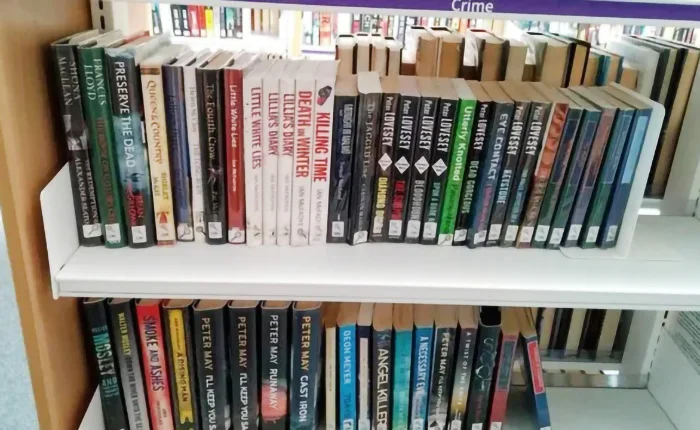
By Lynn Ockersz
A learned judge across the Palk Strait,
Had certainly got his basics in place,
When he held for the primacy of Bread,
And received wisdom freshly upheld,
That it is to the eatery and not the library,
That a starving human drags himself,
Thus putting to rest at first blush,
The Bread or Books first debate,
But rush not to conclusions in this instance,
For, while Bread satisfies the physical self,
It’s Books that nourish the heart and mind,
So, let not Books and Bread futilely contend.
-
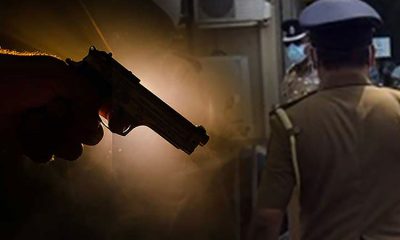
 News4 days ago
News4 days agoSuspect injured in police shooting hospitalised
-

 Features5 days ago
Features5 days agoRobbers and Wreckers
-
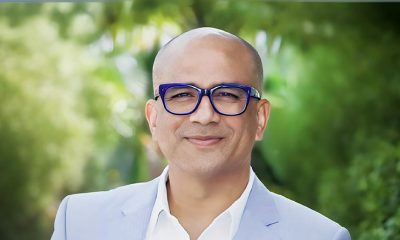
 Business4 days ago
Business4 days agoSanjiv Hulugalle appointed CEO and General Manager of Cinnamon Life at City of Dreams Sri Lanka
-

 Business5 days ago
Business5 days agoBhathiya Bulumulla – The Man I Knew
-
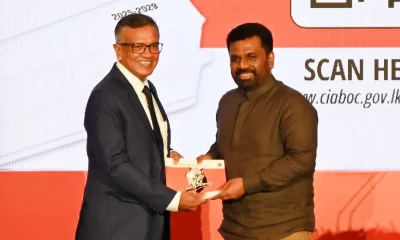
 Business6 days ago
Business6 days agoNational Anti-Corruption Action Plan launched with focus on economic recovery
-

 Features3 days ago
Features3 days agoLiberation Day tariffs chaos could cause permanent damage to US economy, amid global tensions
-
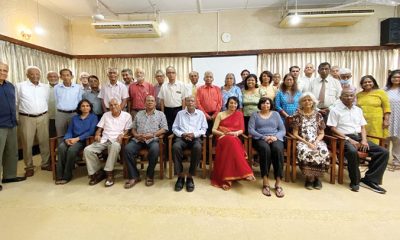
 Features3 days ago
Features3 days agoMinds and Memories picturing 65 years of Sri Lankan Politics and Society
-
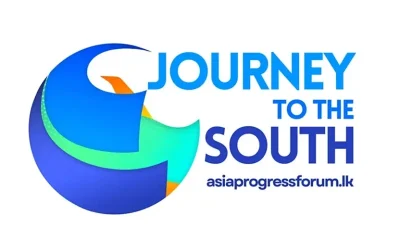
 Opinion6 days ago
Opinion6 days agoSome aspects of China’s development model











